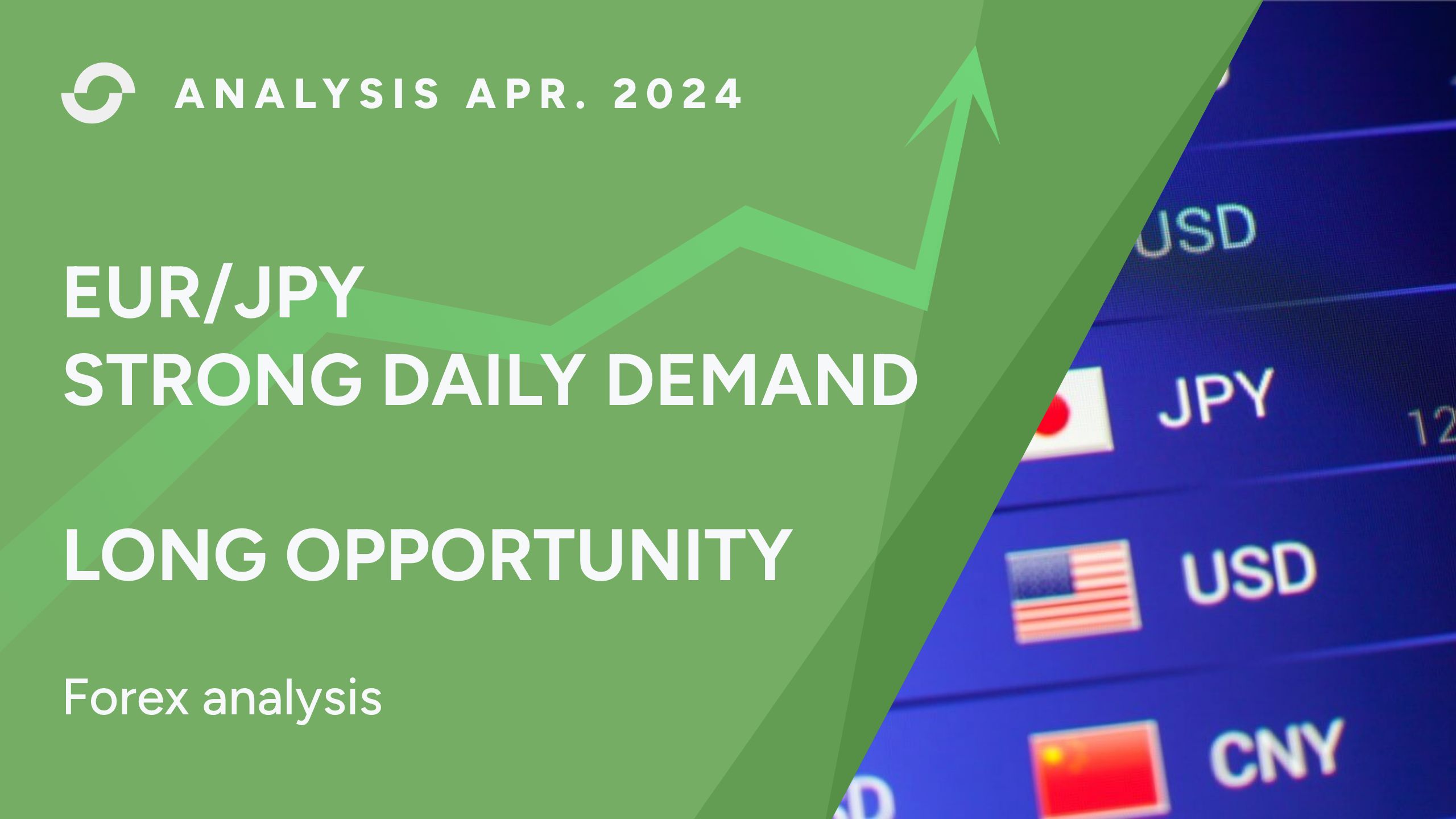31 Mar

One trend is clear as the Forex market continues to fluctuate: the Euro’s rise against the Japanese Yen is gaining momentum. Behind this surge in value lies a powerful force—strong demand levels. This supply-and-demand Forex analysis will explore how these demand levels fuel the Euro’s ascent and what it means for traders looking to capitalize on this bullish trend. Join me as I delve into the intricacies of this dynamic market movement and uncover strategies for navigating its potential opportunities.
The currency pair EURJPY represents the Euro and Japanese Yen exchange rate. It is one of the most actively traded pairs in the forex market, as both currencies are major players in the global economy. The Euro is the official currency of 19 of 27 European Union countries, while the Japanese Yen is used in Japan and is considered a safe haven.
One of the main drivers behind this growth has been investors’ strong demand for Euros. The European Central Bank (ECB) has maintained its accommodative monetary policy stance, keeping interest rates low and implementing stimulus measures to support economic recovery. This has boosted confidence in the Eurozone economy and attracted foreign investment, causing an increase in demand for Euros.
On the other hand, Japan’s central bank, the Bank of Japan (BOJ), has also maintained its ultra-loose monetary policy to stimulate economic growth. However, due to Japan’s persistent struggle with deflation and slow economic growth, investors have been less confident about investing in Japanese assets. As a result, there has been a decrease in demand for Japanese Yen compared to Euros.
Moreover, the outbreak of COVID-19 had a significant impact on global financial markets, including the EURJPY pair. Initially, there was a sharp decline due to risk aversion among investors seeking safe-haven assets, leading to increased demand for Japanese Yen. However, as the situation stabilized and economies started recovering, EURJPY regained its upward momentum.
Regardless of the previous fundamental analysis, the EURJPY has created a strong demand imbalance at 162, and we expect the price to return to that imbalance before we can buy the EURJPY currency pair. Watch the supply and demand Forex video analysis below.
In Forex trading, demand levels play a crucial role in determining the value of currency pairs. Simply put, a demand level refers to the price at which buyers are willing to purchase a particular currency, while a supply level is the price at which sellers are willing to sell their currency.
Watch the video analysis of Forex below to see what occurred. The Forex trade is unfolding as anticipated.
Strong demand levels occur when there is a high demand for a particular currency, increasing its value against other currencies. This can be caused by various factors such as economic growth, political stability, or positive news about the country’s financial standing. When there is strong demand for a currency, investors have confidence in its future prospects and are willing to pay more.
So, how does strong demand impact currency pair trends? Let’s take the Euro and Japanese Yen as an example. In recent months, the Euro has been on an upward trend against the Japanese Yen due to strong demand levels for the Euro. As mentioned earlier, this could be attributed to positive European economic data and increased investor confidence in the region’s economy.
Understanding demand levels and how they impact currency pair trends is crucial for any Forex trader. By focusing on strong demand levels, traders can identify opportunities to buy or sell currencies and take advantage of market movements. As various factors influence demand levels, staying updated on global economic and political events that may affect currency values is essential.









